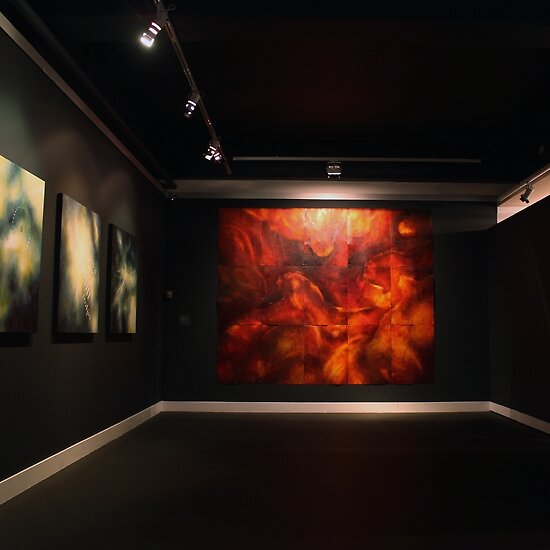I have had another epiphany - I shall call it 'a contemporary epiphany' - but this time I dont know what it means! I know it will deeply affect my art practice - but how, I cannot yet tell.
It was at the
National Museum: Archeology, in Dublin which I visited recently. There are a number of objects in this rich collection which are making me rethink my understanding of contemporary art practice and aesthetics.
One was a small golden model of a boat made during the Iron Age in the 1st Century BC, part of the
Broighter Hoard. It is what I would have - before this visit - thought of as a strikingly contemporary design. Its simplicity of form and exquisite aesthetic made my mouth water and my heart melt. It was not even as big as my hand, delicate and unbearably beautiful. If I saw this in a jewllers window in Barcelona or London today I would marvel at its contemporary design. How can something this old look so funky? What is it that travels so well through time? And what does this say about 'cutting edge' art today?
 |
| Golden model of a boat from the Broighter Hoard, 1st Century BC |
Another piece that struck me was a riveted bronze cauldron from the late Bronze Age, dated around 700 BC. It is quite large, about half a metre in diameter. It was almost the first object I saw as I walked into the museum and honestly, my heart quickened and I felt a surge of excitement. It was a powerful, visceral reaction. I was struck simultaneously by - again - what I saw as a strinking contemporary aesthetic, and an overwhelming sense of history. Centuries of human usage, day to day contact with this beautiful, simple, yet deeply significant artefact. Both a household tool and a ritual object. I was struck by its integrity - the combination of form and function, beauty and necessity. It is formed from plates and sheets of bronze which have been riveted together. The rivets themselves are stunning with sharply conical heads which, apart from being highly decorative, would also have helped to collect the heat and hasten the boiling process. Form and function, beauty and necessity.
 |
| Bronze cauldron from Castlederg, County Tyrone. Late Bronze Age. |
The ancient vessel form and the simple clarity of the repetitive rivets give it a powerful presence that, quite literally, took my breath away.
These two objects, along with the fine examples of Bronze Age golden jewellery, left me with an overwhelming sense of our commonality. It was simple to see, indeed to feel, the unbroken thread of humanity through all these works.
 |
| Gold gorget. Late Bronze Age. |
To imagine oneself as a woman, or man, in 900 BC wearing these decorations, to desire them in the same way, to know that wish to adorn ones body and make a statement about power, beauty and priviledge. To look through the eyes of an artisan in 100 BC making a simple object of beauty and deep symbolism, to see through their eyes and witness the mark of their hands. And to see how - despite all our scientific and technological advances, all our modernity, our creativity and artistic advances - a simple crafted object from 2,000 years ago can look so incredibly contemporary! That strikes to my very soul and I dont think I will ever look at my own practice in the same way again.
How can I call myself a contemporary artist when this small boat strikes me as the epitome of modern design? It is thousands of years old for heavens sake! No wonder so many artists become caricatures of themselves trying to be 'new' and 'different' as if that is enough in itself.
Simple forms - the vessel being a fine example - clear craftsmanship, exquisite attention to detail and a certain sense of integrity. I think these are constants in 'good art'.
There is much more to be thought, but that will have to guide me for now! I would love to hear your thoughts on this as I am just going around in circles!




















